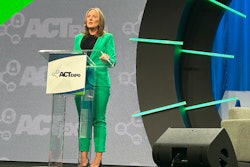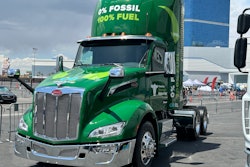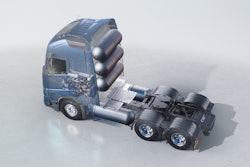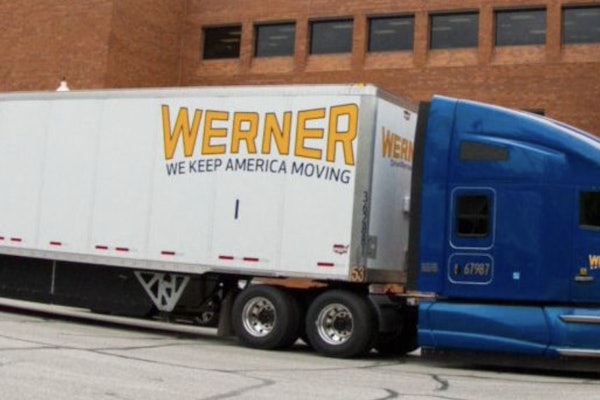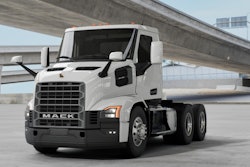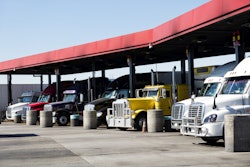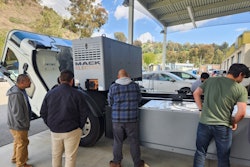I’ve had two experienced freight industry editors ask me the same question: Why is there so much media coverage of battery electric vehicles?
A good estimation of the North American car market might be that 10% of new sales today are BEVs. A source states that in 2021 the light vehicle market sold 3.3 million automobiles and 11.6 million light trucks. Let’s put that in perspective of the whole population of vehicles out there. Another source estimates that in 2022 there were 98.5 million cars and 170 million light trucks registered in the U.S. alone. So, battery electric cars and light trucks are optimistically 2% of the entire population of vehicles on the road.
If BEVs are such a small part of the population, why do they get so many headlines? Why is so much ink (or electrons) spent covering BEVs? The ratios are even smaller in the world of medium- and heavy-duty trucks, but the headlines for medium- and heavy-duty trucks are seemingly commandeered by zero-emission topics.
As a kid, I had the good fortune to take a journalism class in junior high school. I learned about writing news as an upside down pyramid, where the most important items are stated succinctly in the first line and less important details fill in the story further down. This inverted pyramid approach recognizes that you have to catch a reader’s attention early, as they may not read the rest of the article. I learned that the first paragraph needs to summarize the five key factors: who, what, where, when and why.
Somewhere in my life-long media education, I saw the 1958 Clark Gable and Doris Day movie Teacher’s Pet. Clark, playing the experienced, sage and grizzled big city newspaper editor, states frequently that news is a business, has to make money, and that money comes from advertising. Articles have to compete for space with paid advertising or the articles can’t exist.
I did a report in that journalism class on how yellow journalism contributed to the U.S. going to war with Spain in 1898. Research on that had me scouring the dusty basement of the University of Oregon archives. I learned how journalists like William Randolph Hearst and Joseph Pulitzer used eye-catching headlines and sensationalized exaggerations to increase newspaper sales.
Later, I got hooked on Eagles’ music. The jaded, sarcastic Don Henley lyrics of the song "Dirty Laundry", focus on the commercial nature of media coverage. “Give us dirty laundry.”
All of my historical background is just to state the obvious: headlines sell the advertising that pays for the articles to be written. Like it or not, we live in a commercial world. BEVs sell news. It’s a topic that infuriates some and energizes others. Yes, 99% of the medium- and heavy-duty market today is diesel. It’s been diesel for more than 100 years. That is not, apparently, newsworthy. That diesel monopoly is now being threatened by a host of upstart alternatives, chief of which are battery electric vehicles. That’s a Rumble In The Jungle-worthy title fight. It’s got the lawyers, the regulators, the fleets, the OEMs, and the vested interests, all working overtime. That’s newsworthy. That will put advertising dollars in the media outlets.
I’ve covered a wide range of technologies, yet when I meet with natural gas industry people I hear that I’m only focused on hydrogen. When I meet with diesel technology industry groups, I hear that I only cover electric vehicles. When I meet with train groups, and all I hear is that all I cover are trucks. We did a press conference on alternative fuels for Class 8 trucks, and one concerned editor asked, “What about propane?”
People see what they want to see. It’s called confirmation bias. Indeed’s career guide describes confirmation bias as "when you have existing beliefs and place more emphasis and value on information that supports those beliefs. For example, you may only review data that supports your hypothesis and seek materials that match your viewpoints, as well as reject any other information that defies your assumptions and beliefs.”
Confirmation bias permeates the perception of the media’s coverage of topics. A group advocating a certain technology believes all other technologies are competitors, and that any coverage of competitive technology detracts from the group’s primary goals. It gives the group a persecution complex, and members of the group feel that others are getting far too much attention and, conversely, the group’s advocacy is not getting enough.
So BEVs are getting way too much attention. Certainly, BEV headlines are popular. Search engines clearly are prioritizing them to the top of news feeds. Or not. Maybe BEV headlines are registering more than others because people are choosing not to read the other news. I don’t know. One junior high journalism class does not qualify me as a media expert.
I will say this: NACFE has covered all the technologies to some extent. The NACFE “brain trust” consistently includes more than 300 years of experience in trucking and other industries. NACFE tries to live up to its founding purpose: to provide unbiased information on freight efficiency technologies. Does NACFE focus a bit too much on BEVs? Perhaps, but in the last year NACFE has released reports on alternative fuels, on intermodal and drayage trains, trucks and ships, on CNG/RNG, on diesel SuperTruck 2s, and on Run on Less – Electric DEPOT, among other topics. Which did you read?
BEV news sells advertising for media coverage. Or not. You get to decide.




